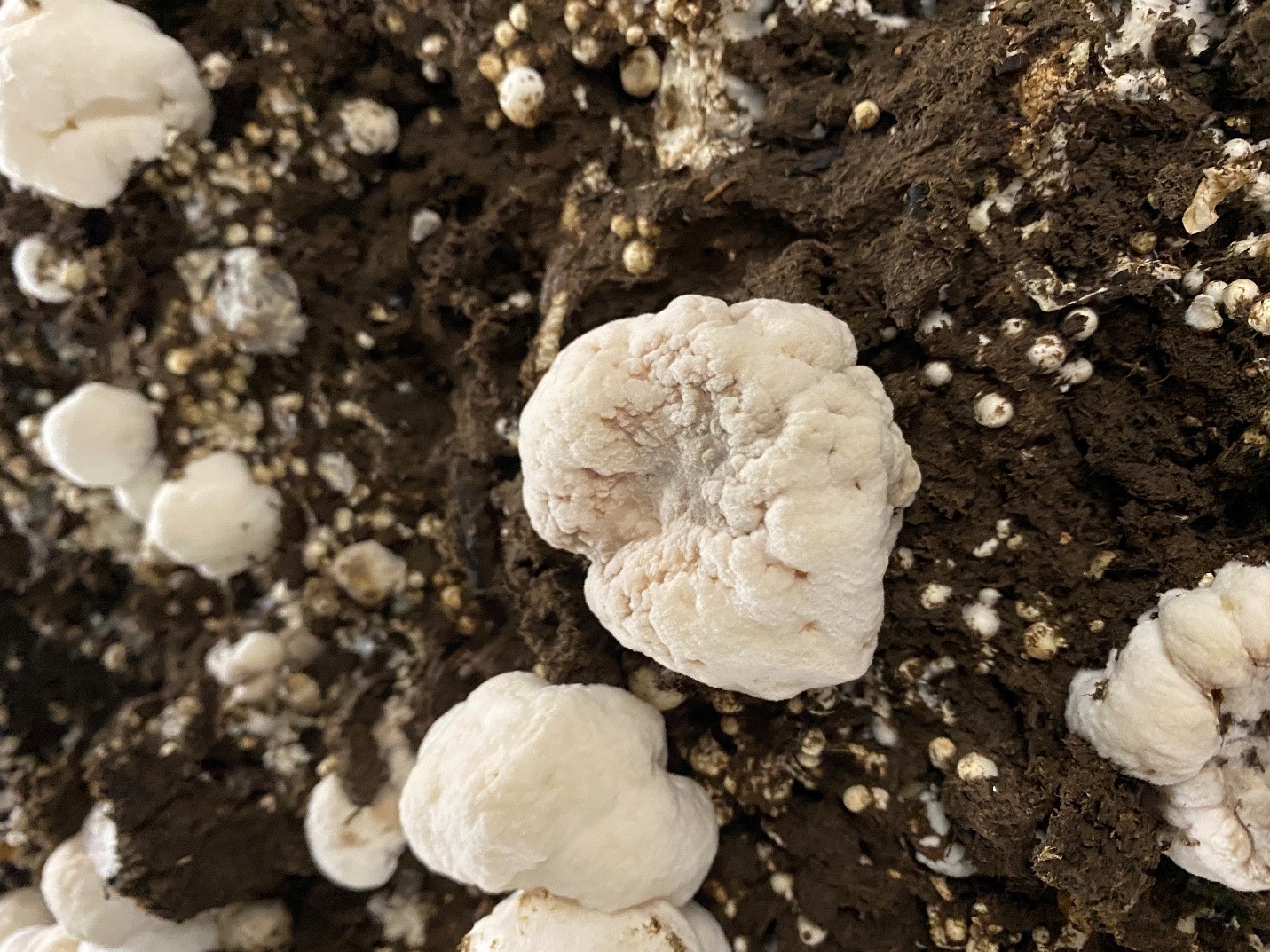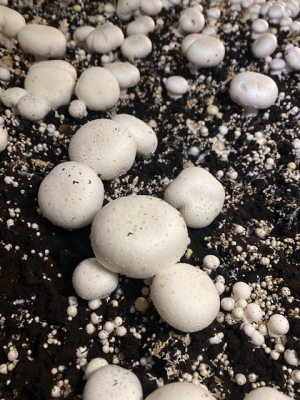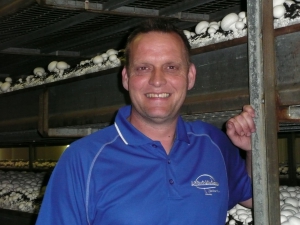Tweeners
Mushrooms that grow between the 1st and 2nd break are called tweeners or in between mushrooms. They are very hard mushrooms because they had a lot of water at the end of the breaks but will discolor fast, once picked, because of that water. They are, however, white inside and are therefore extremely suitable to use for slicing. Many farms worldwide are growing tweeners, only to use them for their sliced product. However, if you have a lot of tweeners it can have a negative effect on the quantity of pins in 2nd breaks. You need to control the amount of tweeners that grow out and spread them out nicely over the whole shelf. If some spots have many tweeners together the 2nd break will not be able to develop well, and yield will be lost. On some farms I see harvest managers making some extra yield with tweeners but not realizing enough that that extra yield gets lost in the 2nd breaks, where you normally pick you nicest quality mushrooms.
That doesn’t mean you can’t grow tweeners. Some farms use them to control the quantity of the pins in 2nd breaks. Just by leaving them nicely spread over the beds you can control the amount of 2nd break mushrooms. Clean the beds good after the 1st break, don’t pick for 2 days and on the 3rd, day manage it well controlling the in between break. If you see the 2nd break coming up spontaneously you can leave some more tweeners, if the 2nd break is struggling on some spots, you must open the in between break up and pick some more there. That need to be planned and managed good to get the best benefits out of the total production.
Erik de Groot
Global Agriculture Services
This email address is being protected from spambots. You need JavaScript enabled to view it.
Dry bubble (Verticillium fungicola)
One of the most seen disease in mushroom farms is the dry bubble, caused by the fungus Verticillium fungicola. Its easy to get an infection in the farm and because the disease is very infectious it can spread quickly through the whole farm. Especially in big farms, where many pickers are working, the dry bubble will spread very fast and can cause a lot of damage and be that bad that 3rd breaks may be lost. Pickers should be getting all the information about the dry bubbles so they can detect the infection in an early stage.

A dry bubble in a 2nd break.
Dry bubble is generally caused by spores around the farms in windy, dusty conditions. On filling days when its windy outside with dust in the air its very well possible to get the dry bubbles into the farm. When they are spotted before he 1st break, the infection came in at filling. Once inside it’s a matter of time before the spores are everywhere if not handled well. Hygiene on the farm should be checked and especially have a good look at all the materials that are used for your mushroom waste like stem bins. Spores of bubbles will be present there if not cleaned well and can be spread if materials are getting moved between rooms. Also pickers are a concern for spreading the infection. Spores are sticky so everything that gets touched after touching a bubble can get infected, be aware!!!, it can go rapidly.
Removing the bubbles is off course also very important. When the pickers don’t recognize a bubble and are picking mushrooms while touching dry bubbles it will be always be hard to control the infection rate. Educate them well and spread around as much information as you have to inform pickers about the diastase and the big risk it has on the results of the farm. Let them, or the picking lead, report the infection so a special crew can handle it the right way.
When the pickers recognize the bubbles, the next step is removing the infection as soon as possible. Makes sure when you remove the bubble you don’t spread the spores what will results in more bubbles within 4 to 5 days. Use a wet tissue to cover infected spots too avoid the spread and remove all the spot including the casing soil, using a plastic bag. Close the bag immediately after you have the bubble and surrounded casing soil inside and remove the bag from the farm as soon as possible. You can also leave it in the affected room and remove it after cook-out. After removing it use salt or ammonia to cover the infected area and inspect the area every day to see if the infection is spreading.
It all comes down to a good hygiene, organization and education. Infection can occur suddenly but if threated the right way can also be stopped rapidly. Organize it well so that infections get removed before rooms get picked or watered, those are moments when spores will spread. If everybody recognizes the disease and knows what to do and handles right, bigger problems can be avoided. Hygiene is key, not only for dry bubbles, and should never be underestimated.
Erik de Groot
This email address is being protected from spambots. You need JavaScript enabled to view it.























